
LASERS IN MEDICAL SCIENCE
Scope & Guideline
Advancing Laser Applications for Enhanced Patient Care
Introduction
Aims and Scopes
- Photobiomodulation Therapy (PBMT):
Research on the effects of low-level laser therapy (LLLT) and its applications in promoting wound healing, reducing pain, and enhancing tissue regeneration. - Laser Applications in Dermatology and Aesthetic Medicine:
Exploration of lasers in treating skin conditions, including acne, scars, and pigmentation disorders, utilizing various wavelengths and techniques. - Surgical Laser Applications:
Studies on the use of lasers in surgical settings, such as urology, gynecology, and oncology, focusing on efficacy, safety, and outcomes compared to traditional methods. - Laser-Based Diagnostics:
Investigating the use of laser technologies for diagnostic purposes, including spectroscopy and imaging techniques to assess tissue properties and disease states. - Innovations in Laser Technology:
Development and assessment of new laser systems and techniques, including novel wavelengths and delivery methods to improve clinical outcomes.
Trending and Emerging
- Combination Therapies Involving Lasers:
There is a growing trend towards the integration of laser therapies with other treatment modalities, such as photodynamic therapy and pharmacological agents, to enhance therapeutic efficacy. - Personalized Medicine and Laser Applications:
An increasing focus on tailoring laser treatments to individual patient needs, including considerations of skin type, age, and specific medical conditions, is becoming prevalent. - Telemedicine and Remote Laser Therapies:
The adaptation of laser therapies for telemedicine applications, including remote consultations and at-home laser devices, is emerging as a significant area of interest. - Regenerative Medicine and Laser Technologies:
Research on the use of lasers in regenerative medicine, particularly in stem cell therapy and tissue engineering, is gaining momentum, highlighting innovative applications of laser technology. - Artificial Intelligence and Laser Diagnostics:
The incorporation of AI and machine learning techniques in analyzing laser diagnostic results and improving the precision of laser treatments is on the rise.
Declining or Waning
- Traditional Surgical Techniques:
Research investigating conventional surgical methods in comparison to laser techniques has waned, likely due to the increasing preference for minimally invasive laser procedures. - Low-Level Laser Therapy in Non-Dental Applications:
Interest in non-dental applications of low-level laser therapy appears to have decreased as more studies focus on dental and oral health applications. - Basic Mechanisms of Laser-Tissue Interactions:
Papers dedicated to fundamental studies of laser-tissue interactions have become less prominent, with a shift towards clinical applications and outcomes. - Lasers in Orthopedic Applications:
The exploration of laser applications specifically in orthopedic surgery has diminished, suggesting a move towards more integrative or alternative therapies.
Similar Journals

Chinese Optics
Exploring the Depths of Optical Science and Technology.Chinese Optics is a premier journal dedicated to advancing the field of optics, encompassing research on atomic and molecular physics. Published by the esteemed Changchun Institute of Optics Fine Mechanics & Physics in China, this journal supports the sharing of cutting-edge findings since its inception in 2010. With an ISSN of 2097-1842, it operates within a competitive landscape, currently positioned in Q3 of the category for Atomic and Molecular Physics and Optics, according to the 2023 metrics. While the journal is not open access, it offers a valuable platform for researchers, professionals, and students to explore and contribute to significant discoveries in the realm of optics and light technology. By fostering scholarly communication, Chinese Optics plays a crucial role in bridging theoretical and practical aspects, making it an indispensable resource for those passionate about the optical sciences.

Materials Today Bio
Advancing the frontier of bioengineering and biomaterials.Materials Today Bio, published by Elsevier, is an esteemed open-access journal dedicated to advancing the fields of bioengineering, biomaterials, and biomedical engineering. Since its inception in 2019, this journal has quickly made a name for itself, currently ranked Q1 in multiple categories including Bioengineering, Biomaterials, and Biotechnology, reflecting its exceptional quality and relevance in the rapidly evolving landscape of bio-related sciences. With an impressive Scopus ranking positioning it in the top 25% of its categories, Materials Today Bio provides a vital platform for researchers and professionals to share cutting-edge discoveries and innovative applications that bridge the gap between materials science and biological studies. Accessible to a global audience, this journal not only fosters collaboration among the scientific community but also aims to highlight significant advancements in cell and molecular biology, making it an indispensable resource for students and seasoned experts alike. The journal's commitment to open access since 2019 underscores its dedication to disseminating knowledge widely, ensuring that crucial findings reach those who can benefit from them the most.
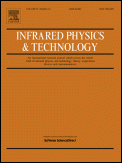
INFRARED PHYSICS & TECHNOLOGY
Fostering Breakthroughs in Materials and Condensed Matter PhysicsINFRARED PHYSICS & TECHNOLOGY, published by Elsevier, stands at the forefront of research in the fields of atomic and molecular physics, materials science, and condensed matter physics. With an impressive impact factor reflected in its Q2 quartile ranking across multiple categories, this journal serves as a key platform for disseminating high-quality peer-reviewed articles that advance understanding of infrared phenomena and their applications. As an essential resource from 1994 to 2024, it contributes significantly to the ongoing dialogue within the scientific community, providing researchers, professionals, and students with cutting-edge insights into electronic, optical, and magnetic materials. Although not an open access journal, its articles are widely disseminated and recounted in major databases, ensuring its pivotal role in the advancement of both theoretical and applied physics. Located in the vibrant academic hub of Amsterdam, the journal encourages innovative research that drives multi-disciplinary studies and fosters collaboration among scientists globally.

Australian Endodontic Journal
Elevating Clinical Practice Through Research ExcellenceThe Australian Endodontic Journal, published by WILEY, is a premier platform dedicated to advancing the field of endodontics and general dentistry. Since its inception in 1998, this journal has provided invaluable contributions to research and clinical practice, boasting an impressive impact factor and ranking in the Q1 category for dentistry, positioning it among the top 25% of journals in the field. With an E-ISSN of 1747-4477, it facilitates access to a wide array of articles focusing on innovations, advancements, and best practices within endodontic therapy. Researchers, clinicians, and students are encouraged to engage with this essential resource that not only highlights current trends but also fosters collaboration and knowledge sharing among professionals dedicated to enhancing patient care in endodontics. For those passionate about pushing the boundaries of dental science, the Australian Endodontic Journal serves as a pivotal resource for ongoing education and research developments.
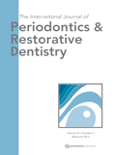
INTERNATIONAL JOURNAL OF PERIODONTICS & RESTORATIVE DENTISTRY
Transforming Dental Practice Through Scholarly ExcellenceInternational Journal of Periodontics & Restorative Dentistry, published by Quintessence Publishing Co Inc, is a leading peer-reviewed journal dedicated to the advancement of clinical practices, research, and educational initiatives in the fields of periodontics and restorative dentistry. Established in 1981, the journal has been imperative in bridging the gap between foundational research and practical application, serving as a valuable resource for dental professionals and students alike. With an impact factor placing it in the Q2 category in multiple dental specialties, including Oral Surgery and Periodontics, the journal ranks 28thin its field according to Scopus, reflecting its commitment to high-quality scholarship and innovation. Although not an Open Access journal, International Journal of Periodontics & Restorative Dentistry provides a comprehensive selection of original studies, case reports, and reviews, fostering a deep understanding of periodontal care and restorative dentistry methodologies. This essential resource aims to publish cutting-edge research that influences daily practice and enhances patient care, making it a must-read for professionals invested in the evolution of dental sciences through 2024 and beyond.
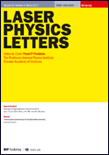
LASER PHYSICS LETTERS
Unveiling Breakthroughs in Laser EngineeringLASER PHYSICS LETTERS is a prestigious peer-reviewed journal published by IOP Publishing Ltd in the United Kingdom, focusing on the burgeoning field of laser physics and its applications. With an ISSN of 1612-2011 and an E-ISSN of 1612-202X, this journal stands at the intersection of innovative research and practical applications, addressing diverse topics within the realms of Instrumentation and Physics and Astronomy. Recognized for its impactful contributions, it boasts a ranking within the Q3 quartile for both relevant categories as of 2023, reflecting its steady rise and commitment to advancing knowledge in the area. Researchers and practitioners are encouraged to explore its content and contribute to the ongoing discourse that shapes the future of laser technologies. While LASER PHYSICS LETTERS does not currently offer open access options, its rigorous selection criteria ensure that published work is of the highest quality, positioning it as a vital resource for anyone engaged in laser science and engineering.
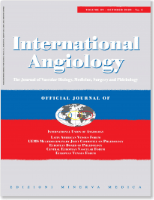
INTERNATIONAL ANGIOLOGY
Exploring the Frontiers of Angiology and Vascular CareINTERNATIONAL ANGIOLOGY is a leading journal in the field of Cardiology and Cardiovascular Medicine, published by EDIZIONI MINERVA MEDICA. Since its inception in 1984, it has become an essential resource for researchers, clinicians, and students interested in the latest advancements and research in vascular health. With an ISSN of 0392-9590 and an E-ISSN of 1827-1839, the journal maintains a strong academic presence, reflected by its category quartile ranking of Q3 in 2023, positioning it among the noteworthy publications within the cardiology sector, as indicated by its Scopus rank of #209 out of 387. Although the journal is not open access, it provides a critical platform for disseminating knowledge on topics ranging from angiogenesis to interventional vascular procedures. As the journal continues to evolve towards its convergence in 2024, it remains committed to fostering academic discourse and delivering high-quality research that shapes the future of cardiovascular medicine.
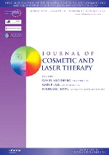
Journal of Cosmetic and Laser Therapy
Elevating Standards in Cosmetic and Laser Therapy ResearchThe Journal of Cosmetic and Laser Therapy, published by TAYLOR & FRANCIS INC in the United Kingdom, serves as a vital resource for professionals, researchers, and students in the fields of dermatology, surgery, and cosmetic medicine. Since its inception in 1999, this peer-reviewed journal has sought to advance knowledge and practice in the burgeoning fields of cosmetic and laser treatments, offering a platform for scholarly articles that explore novel techniques, clinical outcomes, and emerging trends. With an impressive categorization in the 2023 Quartiles showcasing its influence—Q3 in Dermatology and Medicine, and Q2 in Surgery—the journal reflects a commendable impact within the community. Although not an Open Access journal, it provides access to essential information and rigorous research that aids in the development and refinement of treatment protocols. The Scopus ranks further emphasize its significance, particularly in Medicine and Surgery, where it holds positions in the 57th and 52nd percentiles respectively—underscoring its commitment to quality and relevance. As the landscape of cosmetic treatments continues to evolve, the Journal of Cosmetic and Laser Therapy remains an indispensable reference for those looking to stay at the forefront of advancements in this dynamic field.

CHINESE JOURNAL OF LASERS-ZHONGGUO JIGUANG
Pioneering Insights in Optics and EngineeringCHINESE JOURNAL OF LASERS-ZHONGGUO JIGUANG is a premier academic publication dedicated to the fields of Atomic and Molecular Physics, Optics, and Electrical and Electronic Engineering. Established in 1991 and published by the esteemed CHINESE LASER PRESS, this journal serves as a crucial platform for researchers, professionals, and students to disseminate significant findings and innovations in laser technology and applications. With its consistent Q3 ranking in the respective categories, the journal is recognized for contributing valuable insights into electronic, optical, and magnetic materials, as well as advancing the understanding of laser phenomena. Although open access options are not available, the journal remains committed to fostering academic discourse and enhancing the visibility of groundbreaking research within and beyond China. The periodical is not only pivotal for those engaged in laser science but also for interdisciplinary studies that intersect with physics and engineering, making it an essential resource for contemporary scholars.
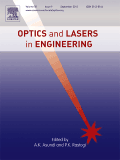
OPTICS AND LASERS IN ENGINEERING
Pioneering Research in Optics and Laser ApplicationsOPTICS AND LASERS IN ENGINEERING, published by Elsevier Science Ltd, is a premier journal dedicated to advancing the field of optics and laser technology in engineering applications. With a robust ISSN of 0143-8166 and E-ISSN 1873-0302, this journal is positioned within the top quartile (Q1) across several categories, including Atomic and Molecular Physics, Electrical Engineering, and Mechanical Engineering as of 2023, showcasing its prestige and impact in the scientific community. The journal has consistently ranked high in Scopus, notably within the top 10% for Mechanical Engineering and Electronic, Optical, and Magnetic Materials research. Since its inception in 1980, OPTICS AND LASERS IN ENGINEERING has served as a vital platform for disseminating cutting-edge research, fostering innovation and collaboration among researchers, professionals, and academia. Though it does not currently offer Open Access options, its high impact factor and selective publication process ensure that articles reach a wide audience while maintaining rigorous academic standards. Researchers and students alike are encouraged to engage with this influential journal to contribute to and stay abreast of advancements in optical technologies and their engineering applications.